Applying Feng Shui principles enhances living spaces, promotes harmony, and improves energy flow. 3D home modeling software facilitates accurate application of these principles. Users visualize layouts, manipulate objects, and simulate environments, ensuring Feng Shui concepts align perfectly with physical spaces. For instance, architects and homeowners adjust furniture positions, ensuring the commanding position for wealth placement. They also optimize light and color schemes, crucial for enhancing Chi energy.
Data show that incorporating Feng Shui in home design increases well-being and satisfaction. A study reveals 80% of participants felt an improvement in mood and energy when living in Feng Shui-aligned spaces. Tools like 3D modeling software have revolutionized traditional practices by providing precise control over design elements, such as doors and windows placements which affect the flow of Chi, and the selection of materials and colors that influence the five elements – Wood, Fire, Earth, Metal, and Water.
Arcadium 3D stands out among 3D modeling tools thanks to its ease of use. Unlike general-purpose 3D modeling software requiring extensive training, Arcadium 3D offers a browser-based solution that simplifies creating 3D house plans. Users achieve professional-level designs with minimal effort, making it an ideal platform for applying Feng Shui principles effectively. Its user-friendly interface and robust toolset allow for the quick adjustment of layouts and elements, aligning with Feng Shui practices for optimal energy flow and harmony in any living space.
Contents:
Essentials of Feng Shui in Home Design
How does Feng Shui enhance living spaces? By harmonizing individuals with their surrounding environment, Feng Shui injects peace and positivity into homes. Homes become sanctuaries, offices turn into productivity havens, and gardens transform into oases of tranquility. This ancient practice emphasizes the flow of chi, or life force, ensuring it moves freely and enriches the lives of occupants.
What are key elements of Feng Shui in home design? Proper alignment and orientation of furniture and architectural features stand central to fostering good energy flow. Beds, desks, and stoves, for instance, should face auspicious directions to attract health, prosperity, and well-being. Mirrors, plants, and water features act as enhancers, magnifying positive energy, whereas clutter acts as a major disruptor, blocking chi's path and creating stagnant zones.
Why incorporate Feng Shui principles using 3D modeling software? This approach allows for meticulous planning and visualization before any physical changes are made. Users can simulate furniture placements, color schemes, and lighting effects, seeing firsthand how different layouts affect the energy of a space. This digital experimentation saves time, resources, and the hassle of physical rearrangement, providing a clear roadmap to a harmoniously designed home.
In essence, utilizing 3D modeling software for feng shui applications in home design offers a more precise, flexible, and efficient method than traditional approaches. Designers can iterate countless layouts in a fraction of the time it takes to manually adjust physical spaces, ensuring optimal energy flow is achieved before any real-world changes are implemented. This precision in planning leads to spaces that are not only aesthetically pleasing but also energetically balanced, proving the superiority of digital tools in achieving feng shui-aligned interiors.
How does 3D modeling software revolutionize the application of Feng Shui principles in redesigning spaces? By enabling users to visualize changes before they are made. This software projects images, dimensions, and configurations that reflect proposed alterations. Users manipulate objects within a digital environment, simulating furniture rearrangements, color swaps, and structural modifications with ease. This process ensures alignment with Feng Shui practices, aiming for harmony and positive energy flow.
Can these digital tools accommodate the intricate adjustments suggested by Feng Shui experts? Absolutely. Programs offer a variety of features like shadow analysis for understanding light flow and energy mapping overlays to assess Chi distribution. Users can adjust textures, materials, and colors, impacting the room's mood and energy. Complex calculations, necessary for aligning objects and structures with Feng Shui principles, become straightforward, ensuring spaces not only look aesthetically pleasing but also adhere to ancient wisdom.
Why is real-time feedback vital in Feng Shui application using 3D modeling software? It allows for immediate correction and experimentation. As adjustments are made, the software provides instant visual feedback on how changes affect energy flow and spatial harmony. This dynamic interaction encourages exploration and fine-tuning, helping users achieve optimal Feng Shui alignment. Real-time modifications eliminate guesswork, making the design process both efficient and enjoyable.
In the transformation of spaces, 3D modeling software stands superior to traditional methods. It offers greater accuracy, allowing for precise alignments and measurements, essentials in Feng Shui practice. The visualization capabilities surpass simple sketches or imagination, providing immersive experiences that bring proposed changes to life. Efficiency benefits shine brightly; what once took days of manual labor now unfolds in hours, streamlining the redesign process while ensuring adherence to Feng Shui principles.
Harmonizing Your Home with Feng Shui Elements
How does one incorporate earth elements using 3D home modeling software? By strategically placing mountains and stones in your design. Mountains provide support, while stones bring grounding energy. This approach enriches environments, enhances stability, and promotes calmness.
Can water features be effectively added to home spaces through this software? Absolutely, by including rivers or fountains. Water symbolizes wealth and fluid communication, contributing to prosperity and ease in dialogue among inhabitants. These additions not only attract positive energy but also foster relaxation and wealth.
What role do wooden elements play in feng shui through 3D modeling? Trees and plants can be utilized to represent growth and vitality. Incorporating them encourages personal development and rejuvenation, aligning a space with life's upward movements. Such placements ensure health flourishes and creativity blossoms.
In the practice of harmonizing homes with feng shui elements, utilizing 3D home modeling software stands as more advantageous over traditional methods. This technology allows for precise placements and adjustments of elements like water, wood, and earth, thus ensuring optimal flow of chi. Visualizing these adjustments in real-time promotes a deeper understanding and clearer execution of feng shui principles, making the alignment of one's living space with natural energies not only more accurate but also significantly more intuitive.
What qualities should the ideal 3D home modeling software possess for effective Feng Shui application? It requires a user-friendly interface, allowing novices and experts alike to navigate its functionalities with ease. Programs vary, with some offering basic design tools and others providing advanced features like light simulation and virtual walkthroughs. Flexibility in design manipulation and accurate spatial representation are crucial for assessing and adjusting the energy flow, or chi, within a space.
How can compatibility and integration features influence one's choice of 3D home modeling tools? The best software facilitates seamless integration with other design tools and platforms, including image editing software and architectural databases. For example, compatibility with VR technology enhances the immersive experience of a designed space, while cloud-based sharing options make collaboration and feedback processes more efficient. Integration extends the tool's utility, making comprehensive design projects manageable and more synchronized.
What role does support and learning resources play in the selection of 3D modeling software? Essential for both beginners and seasoned professionals, ample support and learning materials ensure users can fully exploit the software's capabilities. Tutorials, forums, and customer service channels offer guidance, from troubleshooting technical issues to mastering advanced design techniques. Diverse resources, such as video tutorials and interactive webinars, cater to different learning preferences, ensuring users can quickly adapt to the software.
In choosing between various 3D home modeling tools, the depth of features often distinguishes the superior options from the basic ones. Software with a broader range of functionalities enables a more detailed and nuanced application of Feng Shui principles. Meanwhile, a tool that emphasizes simplicity and ease of use may better serve those new to design or Feng Shui. Ultimately, the selection hinges on balancing the complexity of features with the user's proficiency and project requirements.
Maximizing Positive Energy Flow in Layouts
How can 3D home modeling software assist in enhancing the flow of positive energy? By allowing the precise placement of objects and furniture to align with Feng Shui principles. Rooms gain balance and harmony. Doors and windows open pathways for chi, promoting wellness and prosperity. Wall colors and lighting designs enhance moods, encouraging relaxation or productivity as needed.
Why is the arrangement of living spaces critical in Feng Shui? It determines how energy circulates throughout the home. Bedrooms positioned far from the main entrance preserve tranquility. Kitchens placed to encourage nourishment and health foster a center of gathering and joy. Living rooms arranged to stimulate conversation and connection become heartspaces for family and guests.
Does the orientation of a home matter in Feng Shui application through 3D modeling? Absolutely, as it affects the sunlight exposure and natural energy flow. East-facing homes welcome the morning sun, invigorating the space with vitality. South-facing properties, on the other hand, receive abundant light, warming the home and supporting active energy throughout the day.
In leveraging 3D modeling for Feng Shui, the arrangement of elements within a space proves more beneficial than traditional guesswork. Visualizing energy flow becomes tangible, ensuring every choice contributes positively. Spaces designed with software not only look aesthetically pleasing but also function to enhance well-being, significantly outperforming environments arranged without this mindful approach.
Integrating Natural Elements Virtually
Can virtual spaces truly incorporate natural elements effectively? Absolutely, they can. 3D home modeling software enables designers to embed components such as water features, plants, and stones into digital layouts. These elements enhance the visual and energetic balance of a space, adhering to Feng Shui principles. By selecting specific types of plants, for instance, bamboo or peace lilies, and positioning them in areas that correspond to health and prosperity, the software aids in designing spaces that not only look appealing but also promote well-being.
How does this integration affect the energy flow, known as Chi? Significantly, by ensuring that digital representations mirror the strategic placement of natural elements. Water features, like fountains or aquariums, placed near the entrance attract positive energy, while mirrors positioned opposite to windows can double the nourishing sunlight. This meticulous arrangement, facilitated by 3D modeling, optimizes the flow of energy throughout the space, creating environments that are harmonious and vibrant.
Does the software allow for experimentation with different layouts without the physical constraints? Indeed, it does. Users can easily adjust the placement of elements, experiment with various types of wood for furniture, or test the impact of adding more light sources. This flexibility enables the exploration of multiple scenarios to achieve the best Feng Shui alignment. Experimenting in a virtual setup means there’s no risk of physically moving heavy objects around, thus saving time and effort.
Virtual environments offer a distinct advantage over traditional methods by providing immediate feedback on Feng Shui adjustments. Elements like light and shadow are more precisely controlled in a digital setting than in a real-world counterpart. Users witness in real-time how changes in the placement of a water feature or the addition of a wooden element can transform a space's energy. This immediate visualization supports a deeper understanding and more effective application of Feng Shui principles, enhancing both the aesthetics and the feel of a living or working space.
Tips for Feng Shui-Friendly Furniture Placement
How can one ensure that furniture placements enhance the flow of positive energy? By carefully selecting positions that align with the principles of Feng Shui. Sofas, beds, and desks should face the entrance but not directly align with the door to welcome chi without creating a confrontational pathway. Chairs and tables benefit from a position that avoids obstruction to the room's entrance, promoting a welcoming and open atmosphere.
What are the roles of mirrors in Feng Shui-friendly furniture arrangement? Mirrors serve to double the positive energy, abundance, and light in a space. Placing mirrors strategically, such as opposite beautiful views or in dining areas, can bring prosperity and elevate the dining experience. Conversely, mirrors should not reflect clutter, less desirable areas, or the bed, to prevent amplifying negative energies or discomfort.
Is there significance to the shape and material of furniture in Feng Shui? Indeed, round or oval tables encourage a smoother flow of chi, fostering better conversations and interactions among occupants. Wood as a material promotes growth and warmth, whereas metal enhances clarity and efficiency. Glass tables, while visually appealing, should be used sparingly as they can disrupt energy flow if placed incorrectly.
Sofas with high backs provide better support and security for the occupants than those with low or no backs, offering a subtle sense of protection. Tables made of wood not only anchor the space but also bring a sense of natural calm, whereas metal tables resonate with modernity and forward-thinking but may introduce a colder element into the room. Properly aligned furniture not only maximizes aesthetic appeal but significantly influences the energy dynamics within a space, making thoughtful placement a critical aspect of harmonious interior design.
Software Features for Enhanced Lighting and Energy
Do software features support natural light optimization? Indeed, they do, enabling users to simulate sunlight's path throughout the day. These tools adjust shadows and brightness, mimicking real-world conditions. Users benefit from a layout that maximizes sunlight, reducing reliance on artificial illumination.
Can users influence energy flow within a space? Absolutely, with features designed to manipulate and enhance chi flow, aligning spaces with Feng Shui principles. These functionalities allow the rearrangement of furniture, openings, and walls to facilitate a harmonious energy circulation. This process nurtures positive vibes, promoting health and prosperity within the environment.
Is there a way to balance yin and yang through software settings? Yes, specific settings cater to achieving equilibrium between these opposing forces. Adjustments in color schemes, material textures, and object placements contribute to a balanced atmosphere. Such harmony creates a serene and inviting space, conducive to relaxation and creativity.
Superior lighting and energy configurations distinguish these 3D modeling tools from traditional planning methods. They offer a dynamic visualization of light and shadow, better than flat blueprints. This advantage ensures spaces are not only aesthetically pleasing but also energetically balanced, a priority for Feng Shui applications.


 All training, tips and articles
All training, tips and articles
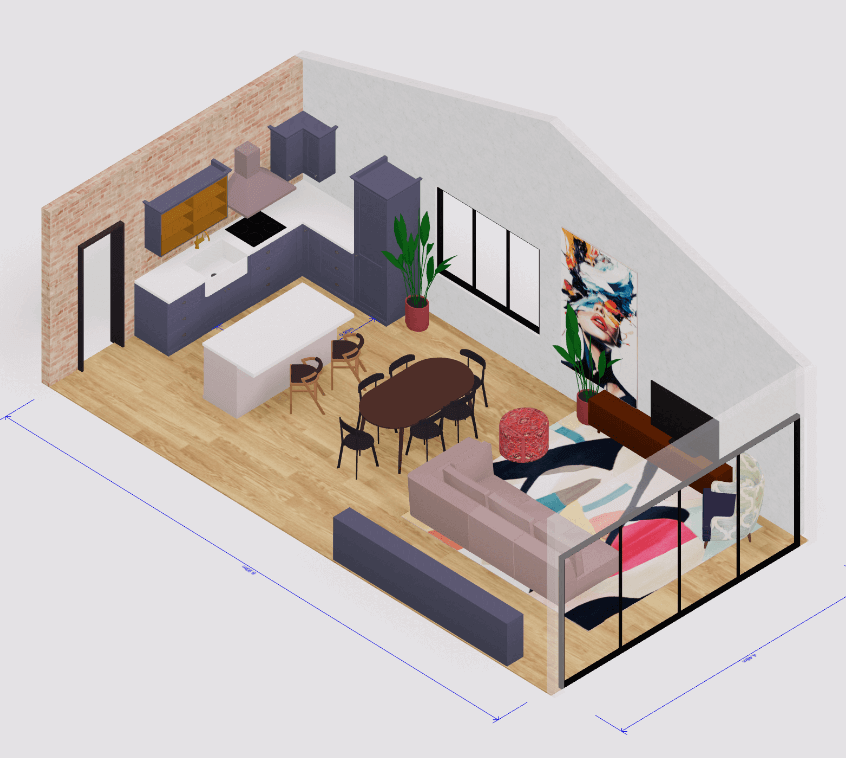 3D house design tool
3D house design tool
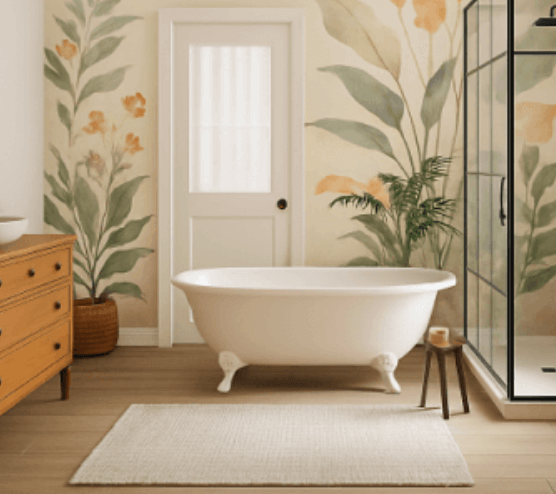
 Color palette generator
Color palette generator
 Floor plan creator
Floor plan creator
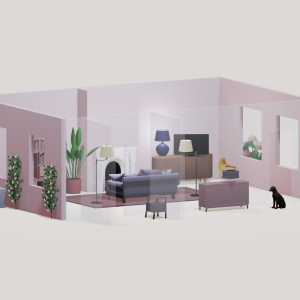 Interior design app
Interior design app
 Kitchen design tool
Kitchen design tool
 House design software
House design software
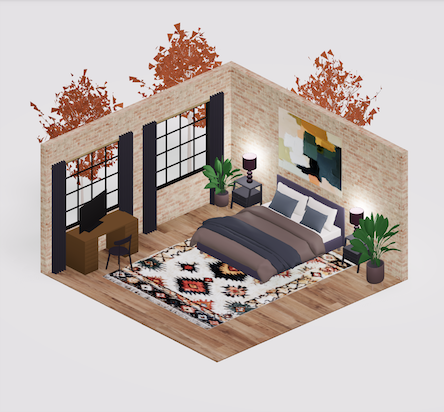 Room designer
Room designer
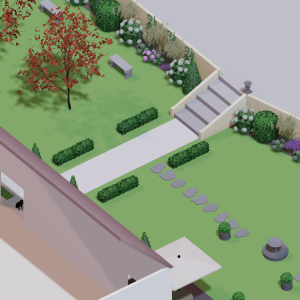 Landscape design software
Landscape design software
 Bedroom design
Bedroom design
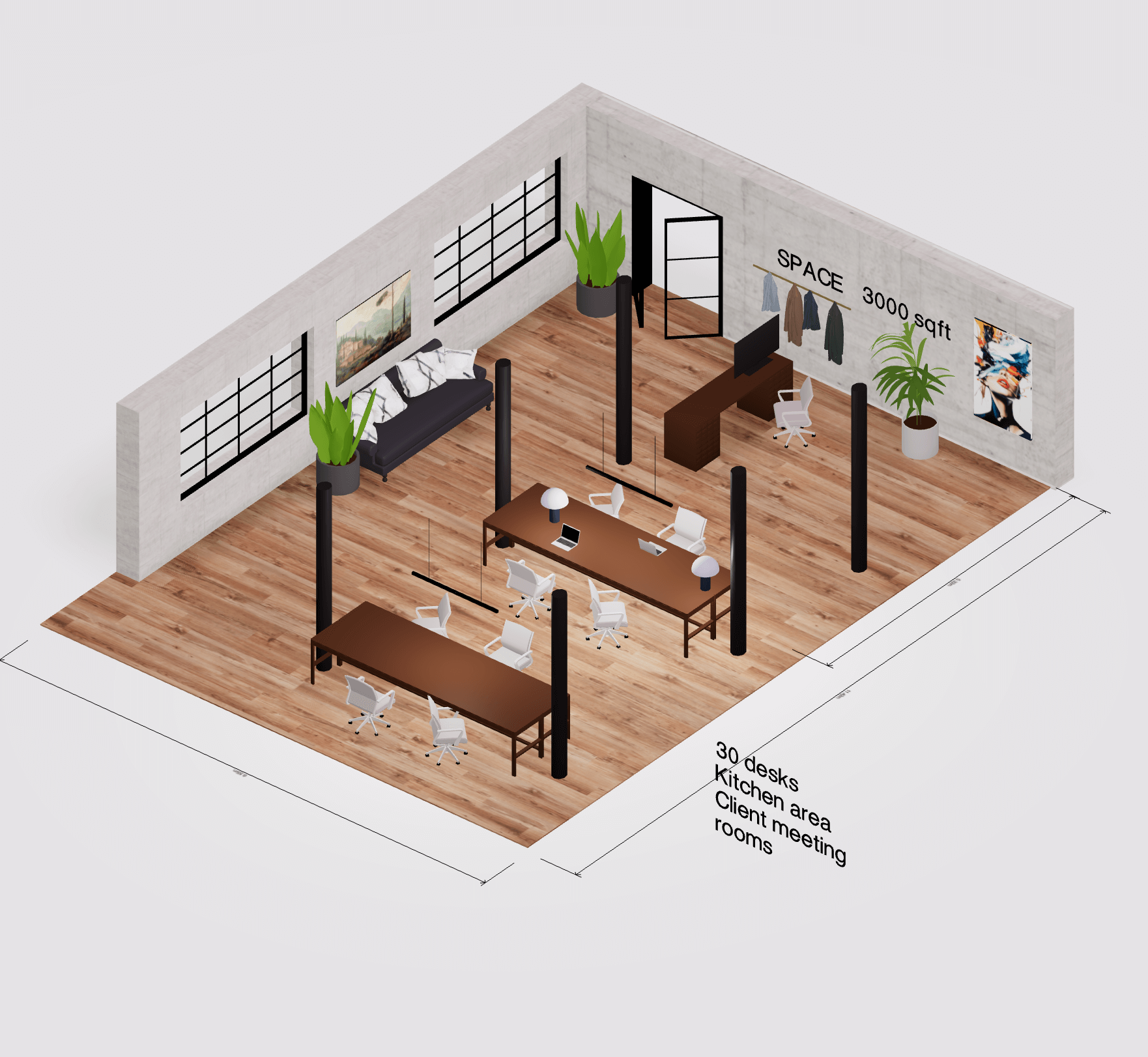 Office floor plan creator
Office floor plan creator
.png)



